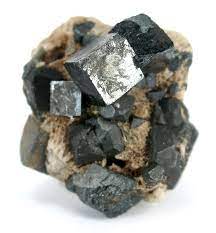Perovskite:

Scientists recently discovered that a nanoscale “ink” coating could improve stability enough to make next-generation perovskite solar cells suitable for mass production.
- Perovskites are a class of materials that share a similar structure and display a myriad of exciting properties like superconductivity, magnetoresistance, etc.
- It is a material that has the same crystal structure as the mineral calcium titanium oxide (CaTiO3), the first-discovered perovskite crystal.
- It is characterised by a three-dimensional arrangement of atoms.
- It has the general formula ABX3, where “A” and “B” represent cations (positively charged ions) and “X” represents anions (negatively charged ions).
- The mineral was discovered in the Ural Mountains of Russia by Gustav Rose in 1839 and is named after Russian mineralogist Lev Perovski.
- Due to its compositional flexibility, scientists can design perovskite crystals to have a wide variety of physical, optical, and electrical characteristics from insulating, semiconducting, metallic, and superconducting characteristics.
- They are known for their exceptional optical properties.
- They can efficiently absorb and emit light across a wide range of wavelengths, from visible to near-infrared.
- This property has made them a promising candidate for solar cells and light-emitting devices.




